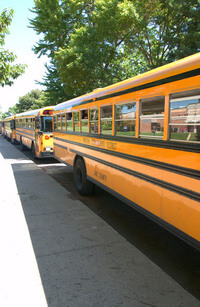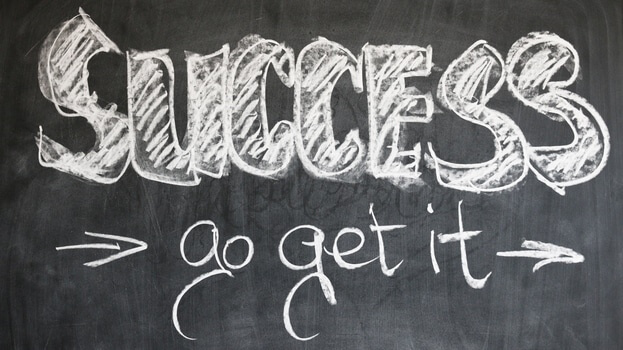As we all enjoy the warmth and sun of summer days, we also know that before too long our thoughts will need to turn to September and our plans for the new school year. So, now is probably a good time to begin thinking about the upcoming months and what we might do a little differently this year!

Unfortunately, we are living in a time when research indicates that children and youth are not as physically active as they should be. As physical education teachers, it’s vital that we continue to seek out and try new strategies that not only encourage our students to live physically active lifestyles but actually achieve this aim. This is a big responsibility and, to succeed, we need to enlist the support of the whole school staff.
Recently, one of the authors had a discussion with a Grade 4 family member about the past school year. The child was asked, “What were your favorite subjects in Grade 4 this past year?” The response was one that resulted in a bit of a surprise as the young child stated, “Umm, my favorite subjects were Math and PE. No wait. PE is not a subject, so Math. Uhhh, I don’t know why I said PE, it’s not a subject!”
Responses like this warrant reflection and follow up. When in this child’s educational journey did this type of thinking originate? Interestingly, this particular child actually is pursuing an active lifestyle and plays all types of individual and team sports. So we were left pondering, how does this occur in schools?
At what point do some students begin to think that physical education is not a subject? This is obviously a problem. However, let’s instead focus on a solution. Is there a guiding strategy we can follow this next school year that will help all students view physical education as a bona fide school subject? Using “professional development” ideas, how can we position physical education rightfully alongside all other school subjects?
Although we don’t claim to have all the answers to correct the “child’s response,” we do believe that adding professional development throughout the school year can help improve a school’s overall physical education programming. It is likely that the majority of teachers reading this article, and regular pelinks4u readers, don’t teach all the physical education in their respective schools. Therefore, we hope that the ideas in this article can be disseminated across the readers’ schools (e.g., staffroom tables), to ensure that this message is being shared for ALL students to benefit; not just those who are lucky enough to be taught by Physical Education Specialists.
Teachers possess the unique opportunity to impact children in a positive manner every school day. (Vidourek, King, Bernard, Murnan, & Nabors, 2011)
Professional Development
Professional development is an excellent starting point for teachers aiming to deliver effective programs. However, all too often it can be quite costly to attend conferences or difficult to convince school professional development planners to spend a whole professional development day on the subject of physical education when staff members have competing interests.
Since, and even before the time when Dewey (1938) stated that each experience influences to some degree the objective conditions under which further experiences are had, research has increased on topics that can help us develop conducive learning environments for our students. More specifically, for the physical education teacher audience, there is a healthy amount of research that supports the value teaching physical education.
With access to this body of research, we should be considering how we can personally use this information to professionally develop ourselves. In what ways can we change our teaching for the better? How can we become more effective teachers? What are we teaching our students and what value is it? Perhaps something as simple as learning a new dance would be good to “shake up” our repertoire? Is it time to look beyond the games we normally teach and include a student choice driven unit, or seek a new and different off-site activity for students to be introduced to? Professional development doesn’t always have to be grand or expensive to be effective!
Perhaps, just as importantly, how can we encourage other teachers to embrace physical education as an equal school subject? What professional development do these teachers need?

A Goal for the New School Year!
For the upcoming school year, we encourage you to think of ways to help your colleagues delve into some professional development to assist either their physical education teaching or thoughts about physical education. For example, if a teacher has had no experience teaching something like dance or orienteering, what experiences can be provided to help teachers develop new knowledge and skills? Might it be helpful to have a teacher work alongside you for a day to develop his or her repertoire? To promote the understanding of your program by non-specialists, can a teacher be invited to shadow you for a morning, an afternoon, or a day to experience a day in the life of a physical educator? Is there an exceptional teacher in your district that a team from your school can observe for an afternoon? Can your school leadership team look at new ways of scheduling early term classes to ensure that you or another role model have an opportunity to guide the teaching of the rest of the physical education instructional team?
Improving our teaching is an ongoing effort. There’s always room for improvement. But presenting to our school community a few professional development options for all the school’s physical education teachers can help increase respect for our subject area. Such steps, we believe, will help develop a school community where students are not heard stating, “PE is not a subject!” For physical education to get the respect it deserves, each of us must take responsibility to constantly share critical information about wellness, physical activity, fundamental movement skills, quality physical education, and much more. But in doing so, it’s also essential that we include our whole school community in this thinking.
Where to Start?
The following are some starting points to think about as the upcoming school year approaches:
- Create a personal professional development plan that incorporates a few points that you intend to change for the upcoming year.
- Encourage school leadership to be an integral part of the physical education program planning and thinking.
- Consider sharing advocacy resources particular to your state like those found at SHAPE America.
- Identify upcoming local physical education workshops and promote them to your colleagues.
- Ask for a 10-minute time slot in a staff meeting to present some activity break ideas that all teachers, regardless of subject area, can utilize in their teaching.
- Invite one or two teachers to join you at a state/regional/national/international conference and encourage them to co-present newly acquired knowledge about the value of physical education when you return to the school.
- Consider creating a school-wide mentorship style program where older students work with younger students on a variety of fundamental movement skills or teach them various playground games. Show the leadership skills that can be developed through physical education.
These ideas and your own can help our students, staff, and school community begin to understand more completely that physical education is a necessary daily subject for student development. We urge you to consider PROFESSIONAL DEVELOPMENT as not just an activity for yourself this school year, but to include your colleagues. Remember, it takes a school community to teach a child, not just one teacher!
Have a wonderful beginning to the school year!
References
Dewey, J. (1938). Experience and education. New York, NY: The Macmillan Company.
Vidourek, R.A., King, K.A., Bernard, A.L., Murnan, J., & Nabors, L. (2011). Teachers’ strategies to positively connect students to school. American Journal of Health Education. 42(2), 116-126.
